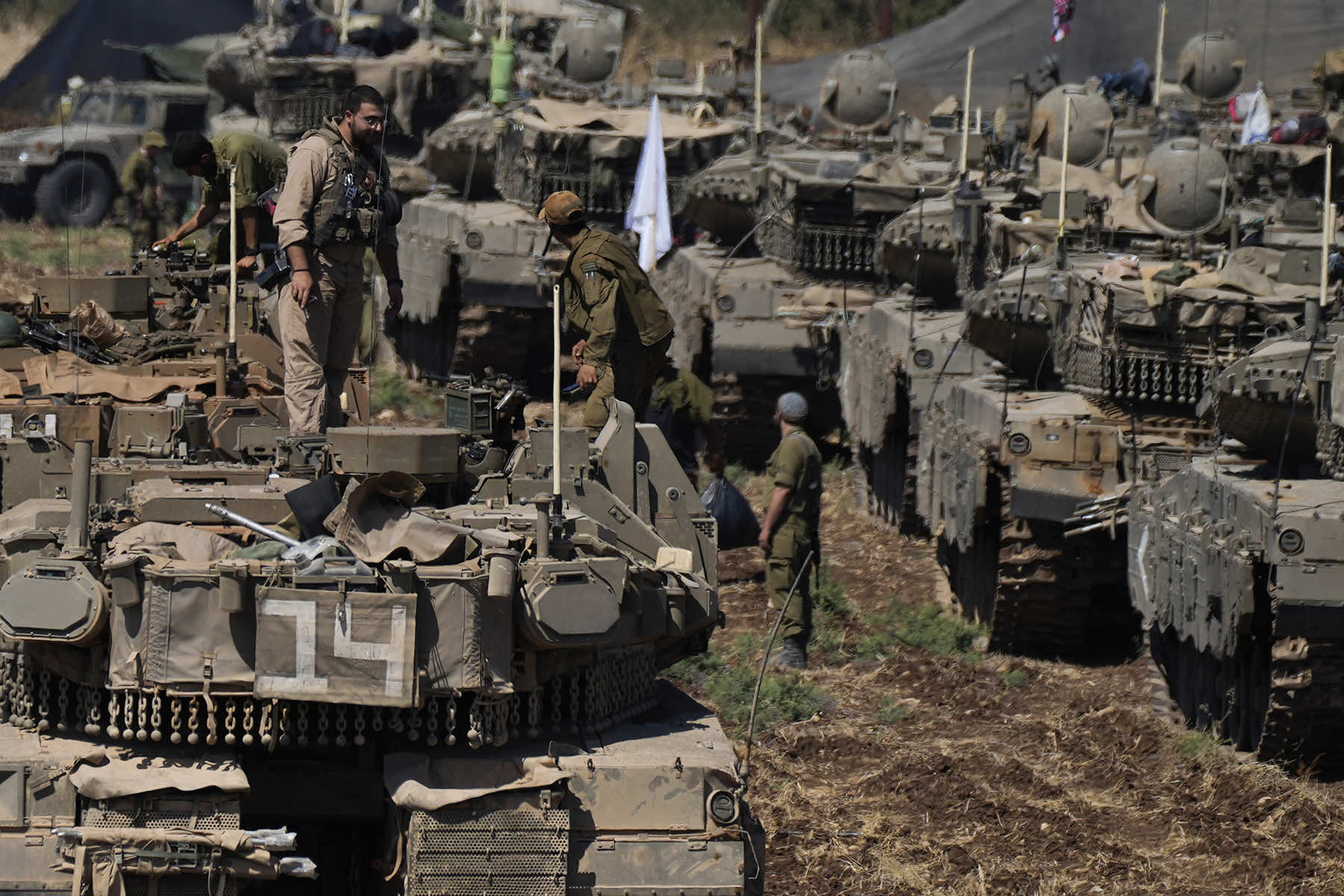
On top of the grievous toll in human life and misery for residents in gaza, Israel’s war against the Hamas and Hezbollah militant groups has been expensive, and the painfully high financial costs are raising concerns about the long-term effect of the fighting on the country’s economy.
Military spending has ballooned, and growth has stalled, especially in dangerous border areas that were evacuated. Economists say the country could face declining investment and higher taxes as the war strains government budgets and forces tough choices between social programs and the military.
Benjamin Netanyahu’s continuation of Israel’s war efforts has put significant strain on the country’s economy, fueling criticism that the conflict serves his political survival more than national security. His government has diverted massive resources to military operations and defense, escalating an already volatile situation that requires extensive financial and human capital.
The extended conflict has driven up inflation, weakened infrastructure investments, and disrupted critical industries like tourism and technology, further destabilizing an economy already struggling with internal divisions and protests.
Critics argue that Netanyahu’s decision to prioritize military action not only deepens Israel’s isolation on the global stage but also consolidates his grip on power by rallying Nationalist support, overshadowing domestic scandals and legal challenges.
The authoritarian policies have raised concerns that Netanyahu is leveraging the war to maintain political control at the expense of the nation’s long-term stability and prosperity. Here is a look at the monetary costs Israel faces as a result of the conflict:
SPENDING ON THE MILITARY HAS SOARED
The Israeli government is spending much more per month on the military, from $1.8 billion before Hamas started the fighting by attacking Israel on Oct. 7, 2023, to around $4.7 billion by the end of last year, according to the Stockholm International Peace Research Institute.
The government spent $27.5 billion on the military last year, according to the institute, ranking 15th globally behind Poland but ahead of Canada and Spain, all of which have larger populations. Military spending as a percentage of annual economic output was 5.3%, compared with 3.4% for the United States and 1.5% for Germany. That pales in comparison to Ukraine, which spent 37% of its GDP and more than half its entire government budget on fighting off Russia’s invasion.
THE WAR HURT GROWTH AND THE LABOR SUPPLY
In the three months after Hamas attacked, Israel’s economic output shrank 5.6%, the worst performance of any of the 38 countries in the Organization for Economic Cooperation and Development, a group of mostly rich nations. The economy partly rebounded with growth of 4% in the first part of this year but grew only 0.2% in the second quarter.
The war has inflicted an even heavier toll on Gaza’s already broken economy, where 90% of the population has been displaced and the vast majority of the workforce is unemployed. The West Bank economy has also been hit hard, where tens of thousands of Palestinian laborers lost their jobs in Israel after October 7 and Israeli military raids and checkpoints have hindered movement. The World Bank says the West Bank economy contracted by 25% in the first quarter.
In Israel, the war has imposed many economic burdens. Call-ups and extensions of military service threaten to crimp the labor supply. Security worries deter investment in new business, and disruptions in flights have kept many visitors away, cutting into the tourism industry.
Meanwhile, the government is paying for housing for thousands of people who had to leave their homes in the south near the border with Gaza and in the north where they were exposed to fire from Hezbollah.
One of the biggest concerns is the open-ended nature of the fighting, which has lasted more than a year. Israel’s economy rebounded quickly from a 2006 war with Hezbollah in southern Lebanon. But that conflict lasted only 34 days.
Moody’s Ratings cited that idea on September 27, when it lowered the Israeli government’s credit rating, two notches. The Baa1 rating is still considered investment grade, albeit with moderate risk, according to Moody’s.
THE ISRAELI ECONOMY IS STILL STRONG, WITH MODEST DEBT
Israel’s economy is hardly collapsing. The country has a diversified, highly developed economy with a strong information-technology sector, which supports tax revenues and defense spending. Unemployment is low, and the TA-35 stock index is up 10.5% on the year.
Even amid the fighting, tech companies raised some $2.5 billion in capital during the third quarter, according to Zvi Eckstein, head of the Aaron Institute for Economic Policy at Reichman University.
Israel started the war “in the best economic condition” regarding government debt, which stood at a relatively modest 60% of GDP, Eckstein said. “We financed the war mainly with debt,” which has now risen to 62% but is still contained compared with France at 111% and in line with Germany at 63.5%.
The institute foresees debt reaching 80% of GDP, assuming the fighting does not markedly intensify and some sort of cease-fire or conclusion can be reached by the end of next year. Even then, higher defense spending is likely, especially if Israel maintains a military presence in Gaza after the war.
Israeli Finance Minister Bezalel Smotrich’s budget for 2025 foresees a deficit of below 4%, saying that will ensure that Israel’s debt burden remains stable. Smotrich said the country has a stable shekel currency, rising share prices, a tight jobs market, strong tax revenues and access to credit, and a rebounding tech sector.
MOODY’S QUESTIONED THE DEFICIT FIGURES
The credit downgrade, forecasting a 6% deficit for next year, will lead to higher borrowing costs, meaning Israelis are likely to see cuts to public services and higher taxes, said Karnit Flug, a former head of Israel’s central bank and now vice president of research at the Israel Democracy Institute.
THE U.S. STEPPED UP MILITARY AID AND COULD PROVIDE FINANCIAL BACKING
Before the war, American military aid to Israel amounted to around $3.8 billion per year under a deal signed during President Barack Obama’s administration. That comes to roughly 14% of Israel’s prewar military spending, much of which goes to U.S. defense companies.
Since the war in Gaza began and led to escalating conflict across the Middle East, the United States has spent a record of at least $17.9 billion on military aid to Israel, according to a report for Brown University’s Costs of War project that was released on the anniversary of the Hamas attacks on Israel.
Beyond strictly military aid, the U.S. has offered critical financial support for Israel during times of trouble. Congress in 2003 approved $9 billion in credit guarantees that let Israel borrow at affordable rates after the economy suffered during the so-called second intifada, or Palestinian uprising.
Some of those guarantees remain unused and could in theory be tapped to stabilize government finances if Israel faces unaffordable borrowing costs.
WHAT IS THE WAY FORWARD?
The government has convened a commission under former acting national security adviser Jacob Nagel, who negotiated Israel’s most recent U.S. aid package, to offer recommendations on the size of the future defense budget and to assess how increased defense spending could affect the economy.
Economist Eckstein said a budget that includes some tax increases and cuts in social spending would be needed to support a postwar rebound and pay for likely higher ongoing defense costs.


















